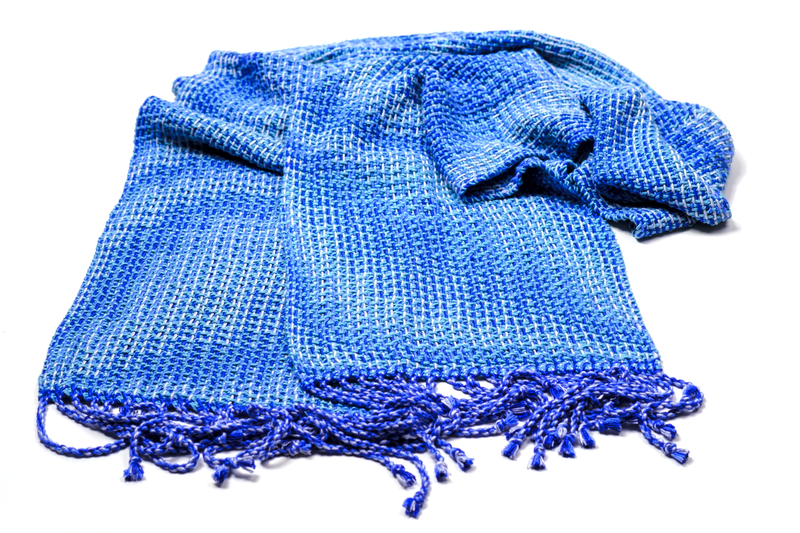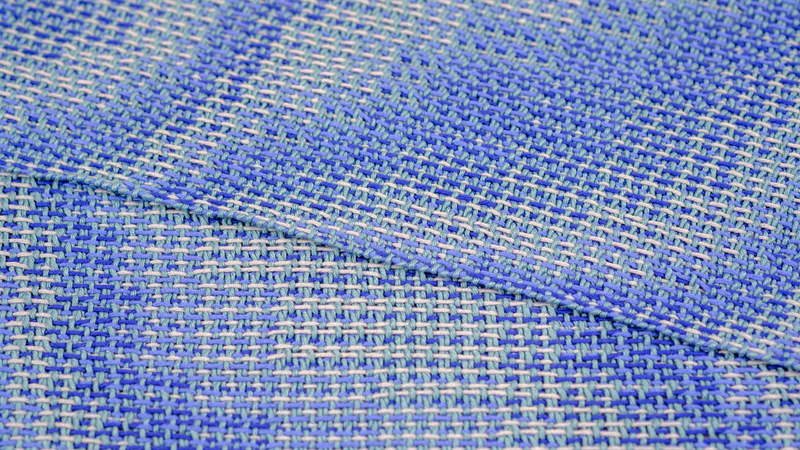My recent discovery of the joy of network treadling made me look at Corris designs in a new light. Up until now, I wove the Corris effect by inserting a tabby in the design line. Although this gives lovely results, obtaining a treadling sequence with the same number of threads as the threading sequence can be challenging. Network treadling is another way to transform a design line into a treadling sequence — no tabby required. This makes it a lot easier to align the threading and treadling sequence. So, I decided to put Corris on a network.
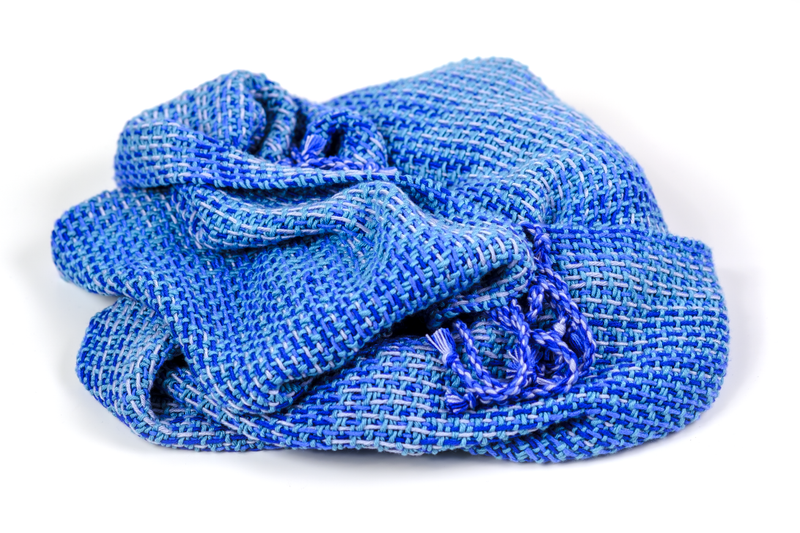
Monochrome Corris revisited
A while ago, I applied the Corris effect to a monochrome warp and used a contrasting color as weft. I took it one step further and chose four shades of blue for this new project. I recently dyed some white bamboo viscose yarn into a nice shade of denim blue. This color made a nice matching set with the dark blue, light blue and turquoise tints that are readily available in this yarn. I opted to use the turquoise as weft and to alternate the other three shades in the warp.
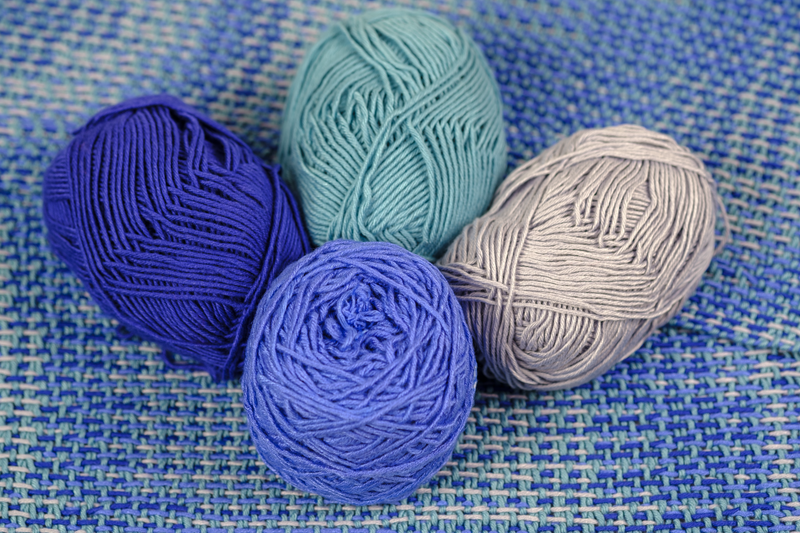
I have used this bamboo yarn before on many occasions. Over the years, this resulted in a large stash that comes in handy for experiments like these. It is one of my go-to yarns for nice and soft shawls, so I decided to turn this project into a shawl as well.
Corris, the network way
I kept the design line quite simple: a big wavelike pattern covering the entire width of the shawl. The number of warp ends in the final design is tripled compared to the design line, due to the addition of two parallel lines. I first made the original design line three times as long to obtain a treadling sequence of the same length. This ‘treadling sequence’ has the right amount of weft picks, but does not lead to a weavable pattern.
This is where the network comes in: it turns the unweavable into the weavable. By demanding the weft threads to coincide with the chosen network, the design line is transformed into a treadling sequence that follows the underlying structure of the network.


There are different underlying networks to choose from, and so far I have only tried a 1/3 straight twill network. This matches well with the 4-echo and 8-echo warps I paired it with. By construction, these warps consist of a multiple of 4 threads. As a consequence, a treadling sequence of the same length is also divisible by 4. This sequence fits perfectly onto the 4-end 1/3 straight twill network. This is important, to make sure that the treadling sequence can be repeated without ‘breaking’ the network.
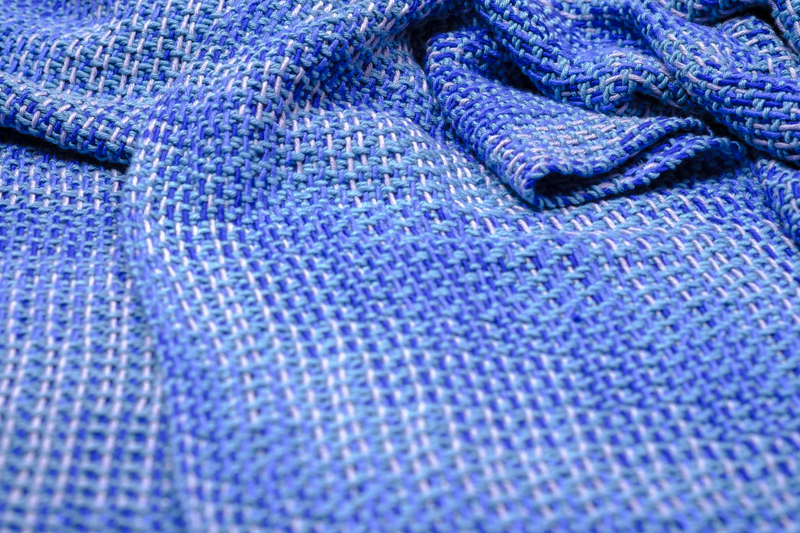
Hence, the 1/3 straight twill network can safely be applied to a design line with a multiple of 4 ends. Tripling a design line does not necessarily give a result that is divisible by 4. However, this is easily solved by adding or removing 1 or 2 weft ends. This is a lot easier than obtaining the right number of weft ends with the use of a tabby.
Of course, another way to go would be to use a 1/2 straight twill network. I tried different networks in Fiberworks and decided I liked the 1/3 twill best.
Dancing with the loom
I really like weaving projects such as Turned Taquete and Corris with a tabby. However, the back-and-forth between the tabby treadles and the pattern treadles can feel a bit staccato. The twill-based network treadling has a more fluent rhythm to it. This results in a dance with the loom that is really enjoyable.
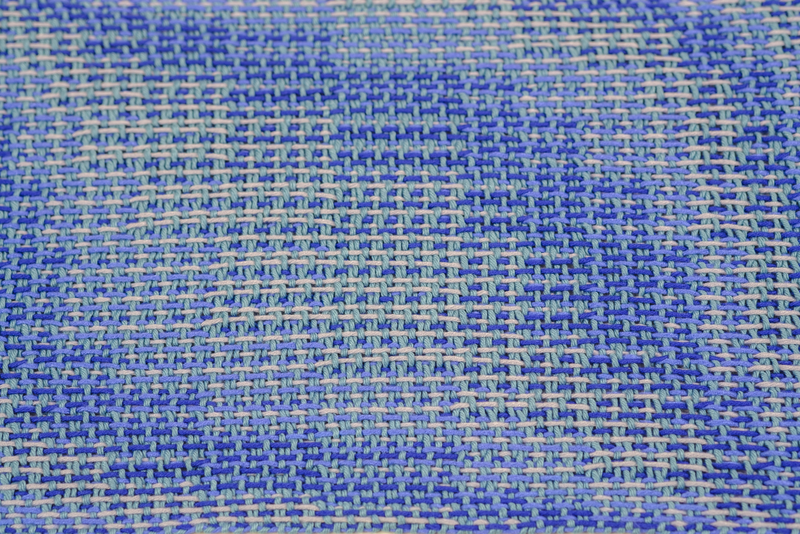
Overall, I am pleased with how the shawl turned out. I do not have a strong preference for either tabby or network to pair with Corris: I like both results and the choice between them will depend on the project at hand. Most of all I like that I have expanded my range of treadling options with network treadlings. This offers a nice change of pace from the staccato tabby dancing — with results that are just as interesting.
